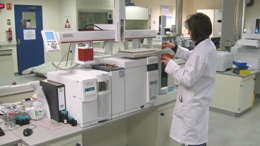A research initiative on the potential harmful effects of electronic nicotine delivery systems (ENDS) by Chemical Insights, an institute of Underwriters Laboratories and Georgia State University’s School of Public Health are now underway. The collaboration will characterize airborne particulate aerosols and volatile organic chemicals released during e-cigarette use and determine human exposure levels and toxicity for users and bystanders, according to a press release.

“With a focus on public health and safety benefits, our research findings will identify specific particles and chemicals that infiltrate the lungs of a user so that steps can be taken to reduce human health risks,” said Marilyn Black, vice president and senior technical advisor with Chemical Insights.
The release states that one contributing factor to youth use of ENDS is the perception that ENDS are a safer alternative to cigarettes and other traditional tobacco products. “However, a series of studies have proven pulmonary toxicity in e-cigarettes and a link to negative impacts on adolescents’ respiratory health,” the release states. “ENDS lags in product safety testing for numerous proprietary liquids and aerosol delivery methods available in the expanding marketplace.”
The study will reportedly provide scientifically sound data to inform policy makers, healthcare providers, manufacturers and consumers of potential health risks and approaches for product usage and label warnings to educate consumers of potential respiratory hazards, according to Roby Greenwald, assistant professor in the School of Public Health and co-principal investigator of the study. “We’re looking at multiple liquids and aerosol delivery methods that are readily available to better understand toxicity and their impact on human health.”
The U.S. Food and Drug Administration is currently evaluating the harm-reduction potential of vapor products through its premarket tobacco product application (PMTA) process. The regulatory agency has stated that ENDS are safer than combustible tobacco products, but do not come without risk.
Research findings will begin to be released in fall 2021.

